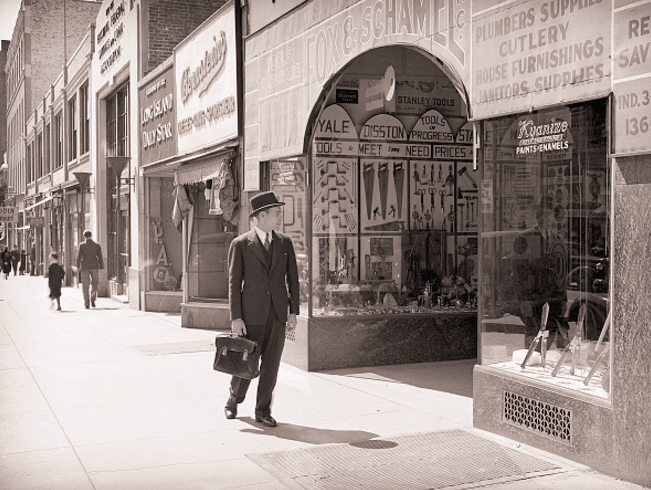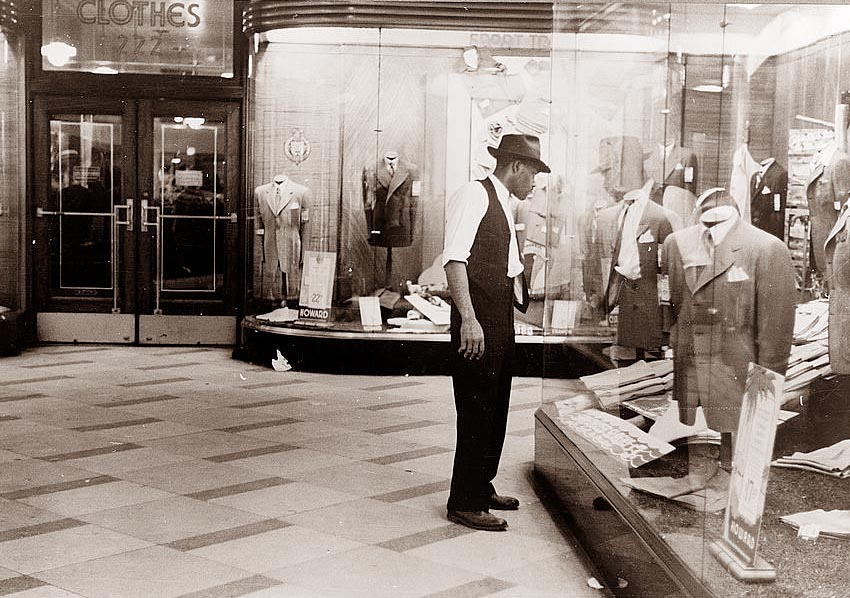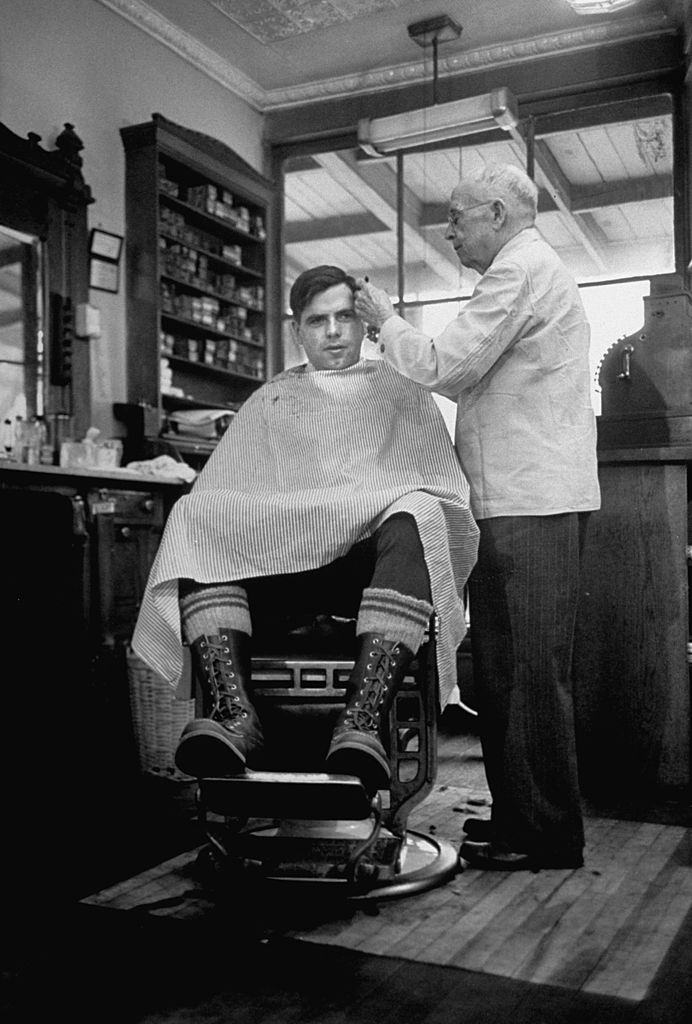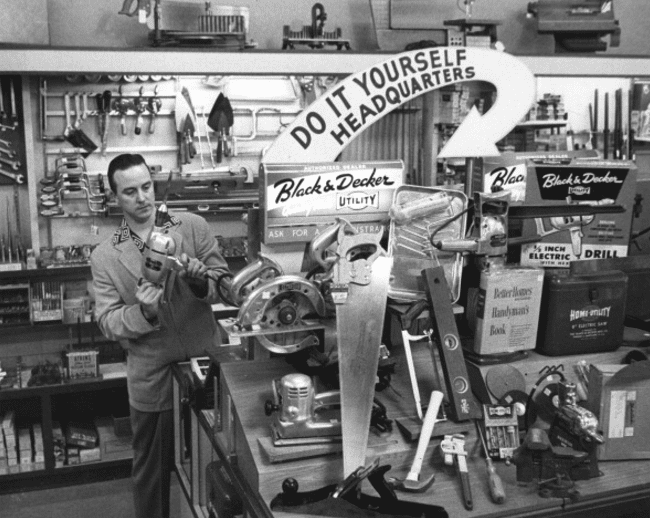In general, a man should strive to live a life of frugality and simplicity — relative to his personal means.
But following that philosophy doesn’t always mean buying only the very cheapest products and services.
In fact, sometimes paying top dollar for something is the best way to ultimately save money and live a simpler life.
A top dollar item is often a top quality item, and that means it will typically last longer than cheaper varieties. Its upfront cost may be more, but its cost per use actually ends up being lower over its lengthy lifetime. Sometimes the more expensive item can actually be the better bargain.
The quality of a top dollar item also usually means it will break down less and have fewer problems than something cheaper and subpar. That means less headaches, and less time spent on maintenance. The less time you spend tending to your stuff, the simpler your life.
As the old saying goes: Buy once, cry once.
Finally, quality goods and services can substantially enhance your life — boosting your health, mood, attractiveness, and efficiency — which allows you to be more effective in the world; top dollar products are investments in yourself that can reap dividends that readily repay their initial expense.
With that in mind, below are 9 items you should be especially willing and happy to pay top dollar for, with explanations and some general pricing guidelines included.
9 Things to Pay Top Dollar For
It should be noted at the outset that a higher price does not automatically make for a higher quality product. A $200 pair of shoes is not better than a $50 pair of shoes just because it costs four times as much. Branding and marketing gimmicks tend to play a big role in price points, often inflating what you’ll pay by a large degree, especially in the clothing world.
So how do you come to tell the difference between something that’s highly priced because of its quality and something that’s artificially inflated? You’ll need to do your research and learn the characteristics of what makes for quality items. Check to see where an item is manufactured. Read reviews. The informed, savvy consumer doesn’t always pay top dollar in the belief that price invariably correlates with quality, but only opens his wallet when he’s ascertained that it does.
Mattress
You’ll spend an average of 24 years(!) of your life sleeping. So there’s no investment that yields a better ROI than a mattress that helps you slumber soundly. And while the best mattress isn’t always the most expensive one, it’s definitely not going to be the cheapest either. And for goodness sake, don’t buy one from Craigslist.
Ultimately, you need to buy the mattress that’s right for you (and your partner if you have one). So while the title of this article implies that you should spend top dollar on a mattress, the reality is closer to don’t be afraid to spend top dollar, if that’s the right mattress for you. Say you find one for $2,000 that feels like heavenly clouds when you lay on it, and you also find one for $1,000 that isn’t as comfortable, but you think, “I could sleep on this.†What should you do? Go with the heavenly clouds, no question. With how much time you spend in bed, that $1,000 difference will be made up for real quick.
Pillowtop, memory foam, latex — with all the marketing gimmicks and terminology out there, what should you go with? The first way to shop is to simply go to a store and lay on a bunch of mattresses. And don’t just lay down for a second and call it good, test them out for at least a few minutes, and ideally even longer. Heck, bring a book. It will probably feel awkward, but it’s not worth years of poor sleep to get the wrong mattress. It also pays to shop at a place that offers a 30-day (or longer) money back guarantee; if your bed of heavenly clouds turns out to be a sack of lumpy potatoes, you won’t be stuck with that expensive sack for the next decade.
On the other hand, you can shop online for a mattress. There are a ton of companies that have cut the price of luxury mattresses by not having retail storefronts and a boatload of products to choose from (Tuft & Needle has a single mattress model; Casper only offers two). It might seem weird to buy a mattress online, but these companies also tend to offer extended trial periods (100 nights seems to be about average) in which to test that mattress out, with no penalty for returning it. Do your research on their products and figure out which you think would be best for you.
Look to spend $1,000-$2,000 depending on the model and size of mattress you buy. In the grand scheme of things, that sure isn’t much when it will help determine how well-rested you are, and how well-rested you are will determine how much energy you’re able to put out in all your waking hours; in consistently giving you a good night’s rest, your investment in a quality mattress will not only pay you back in the intangibles of good mood and clear mind, but perhaps even concretely as well, in allowing you to work harder and make more moola!
Shoes
It doesn’t really matter what kind of shoe you’re looking for, don’t skimp. Higher priced shoes are just made better and utilize better, more durable materials and construction. Now, this doesn’t mean you need to pay exorbitant prices, but the clearance rack at Payless is not the place to be shopping.
So why spend top dollar on shoes? Not only will your leathers be higher grade in spendier pairs, but the soles will be higher quality rubber (and can sometimes be replaced without replacing the whole shoe), the eyelets and laces will be nicer and more durable, and any other materials, be it canvas, suede, etc., will be a notch up from discount shoes. Paying more up front ensures your shoes will have better lasting power in looks (no fraying laces or holes in the sides because of thin material), comfort, and durability (since I’ve started buying nice shoes, I’ve noticed that I’m buying shoes less often!).
This is especially true of certain types of shoes:
- Leather boots. Whole articles can and have been written about leather boots. In general, look for full- or top-grain leather and Goodyear welts (which allow it to be re-soled). You’ll spend $150-$400 on a pair of nice leather boots; they’ll last decades as long as you take care of the leather. While you can’t go wrong with heirloom-brand shoes like Chippewa and Red Wing, there are a ton of great new and lesser-known companies making high-quality boots. Huckberry is my one-stop-shop; if they keep it in stock, you know it’s a winner.
- Dress shoes (if you wear them a lot). The best dress shoes can also be re-soled depending on the construction. Ask about that when purchasing. For a top quality pair, look at Allen Edmonds, Frye, Johnston & Murphy, and Paul Evans. But you can also get a heck of a shoe for $100-$200.
- Shoes that serve a particular purpose — work boots, hiking boots, running shoes, etc. A $100-$200 Red Wing work boot is going to go the distance far better than a cheapo off-brand. If a more expensive hiking boot or athletic shoe feels better on your feet, don’t skip out because it costs a little more. Your feet are your foundation, and good shoes are key in enhancing the functionality of your work and play.
I’m of the opinion that for more general purpose, run-around-town type shoes, it’s okay to be a little cheaper, knowing they’ll need to be replaced in a few years.
Suit
To get a nice, quality suit that will last through hundreds of wears, you’re going to have to go a little nicer than the $100 suits that you’ll find at the likes of Jos. A. Bank and Men’s Wearhouse.
According to Antonio Centeno, most inexpensive, off-the-rack suits are made in huge batches and cut a bit loose, as to fit the greatest number of men. They’re also made with lower-quality fabric, as well as less fabric. And finally, they’re constructed by huge machines that are spitting out as many garments as possible.
This usually means a few things: 1) It will need multiple adjustments before perfectly fitting your unique physique, quickly ratcheting up the cost. 2) Since the fabric is lower quality, it might show marks where it’s been adjusted, like ugly scars that won’t go away, whereas a nicer fabric will naturally hold together better. 3) Since there’s less fabric, adjustments are harder to make; a little extra goes a long way in providing a wider range of possible tailoring. 4) Since they’re mass produced by machines, these cheap suits could be unevenly constructed and may have blemishes that snuck by quality control.
There are a number of things that you as an average consumer can look for to tell if a suit is high quality and worth your investment:
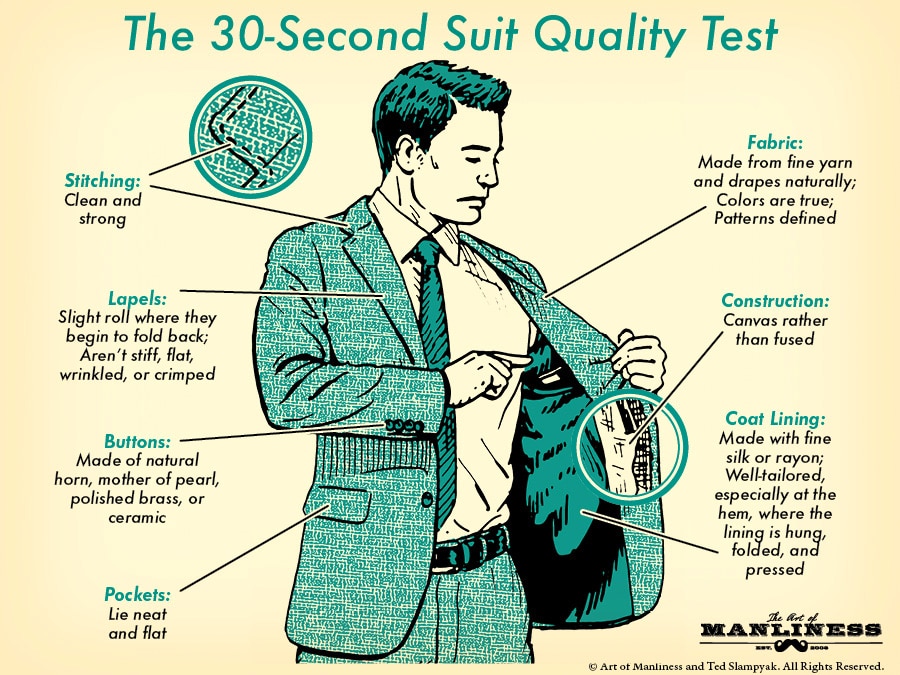
In most cases, you’ll be looking at spending $300-$600 at a men’s store, with another $50-$100 for adjustments (although sometimes the stores throw in adjustments for “freeâ€). If you’re going bespoke, it obviously won’t need adjusting, but you’ll be spending $1,000+.
You’re doing a disservice to yourself (and everyone who sees you!) to wear a suit that’s been bought off-the-rack and worn with no adjustments whatsoever. It’s just not realistic that what you buy will be perfectly suited to your unique body. Take the time to look over the garment in question, and only if it has the quality markers shown above should you get out your wallet.
Leather Jacket
In a world of fast fashions and ever-changing style fads, leather sticks around for the long haul, both in terms of style and performance. A good leather jacket — and it does have to be a good one — will last for decades, and probably outlive you.
So why is a leather jacket something you should pay top dollar for? It mostly has to do with types of leather used (although other things like zipper materials and stitching come into play as well). In my earlier, less informed years, I bought a cheap leather jacket emblazoned with a Minnesota Vikings logo for about $75. Not my best style decision. Beyond the garishness, though, the leather itself started to flake off after a couple years. I knew even then that leather was not supposed to flake off. If you buy a cheap product, that’s what’s going to happen. It’s only a matter of time.
When buying a leather jacket, you need to look for either “top grain†or “full grain†material. These are from the outer hide of the animal and are the toughest and most durable leathers. If it’s not clear what the material is when you’re shopping, ask.
Never buy “genuine leather†or “bonded leather.†Genuine leather is in fact “genuine†in that it’s real leather from a whole piece of animal hide, but it’s thinner and less durable. Bonded leather is basically what it sounds like: leather scraps chemically bonded together to form a single piece of material. This is the stuff that peels. No thank you!
If you get a great deal, you can score a good leather jacket for a few hundred dollars. Effortless Gent recommends being cautious of any jacket under $500 (which he notes, even then, is pushing it on the cheap end), and his go-to jacket is one that runs $750. Other men’s style sites say $800-$1,500 is your leather jacket sweet spot for finding something that will last decades. If you want something really quality and classic, take a look at a company like Schott’s, who have been in the leather biz for over a century.
As Antonio Centeno wrote, “the upfront cost might be steep, but you’re going to have the jacket so long that, per wear, you’re probably paying less than you are for anything else in your wardrobe.â€
Bag/Briefcase
While backpacks are perfectly acceptable in a man’s high school and college years, beyond that, he should upgrade to a handsome briefcase or messenger-style bag. He shouldn’t be trotting off to work in his business attire with a backpack slung over his shoulder.
And while you’re at it, you might as well get yourself a bag that will last through years of commutes, elevator rides, and important meetings. Sometimes this means leather; sometimes it means heavy duty canvas or other fabric that will better withstand the elements and the inevitable bumps and bruises that can easily accumulate on busy subways and crowded sidewalks.
When it comes to leather, heed the tips above about shoes and jackets. Full- or top-grain leather only. Unlike a jacket that should be butter-soft, with a bag, you actually want something with some thick, sturdy construction. You want the bag to be able to stand up on its own rather than crumble to the floor.
With canvas or synthetic materials, look for something that will hold up to the elements. It’s hard to discern a quality material sometimes, but give it a feel and rub it between your fingers. Does it feel hardy? Or does it feel thin and cheap? You’ll know the difference. It’s not a scientific test by any means, but it’s one that often works.
Try the bag on; how does it feel? Are the straps thick and comfortable? Also take a close look at the closure hardware. Are zippers and clasps heavy duty? Does it all line up and easily open/close?
To get something that satisfies all these questions, look to spend at least $250-$500 (some of your leather bags will be even more, like the famous Saddleback Briefcase). Years of everyday use will make the purchase well worth it.
Haircut
Most men are content to get their haircut at whatever chain salon they happen to wander into, and accept whatever cut the stylist happens to give them. Fifteen bucks later, you’re on your way.
A better route, especially as you leave college and begin to get more serious about the importance of your appearance in your professional career and love life, is to develop a long-term relationship with a quality barber who can take your hairstyle up a notch. The difference between a chain-salon haircut and one from a quality barber can be really significant, and the difference a quality haircut makes in your appearance is quite underestimated — it can definitely change how you look.
So make it a habit to go to a local barbershop and establish a rapport with a professionally-trained barber who specializes in men’s hair, can help you figure out the style you want, and will come to know your unique hair over the course of many cuttings.
Keep in mind that just because a barber is “old school†doesn’t means he necessarily gives good haircuts; a $20 haircut from Old Bill will probably be about as good as a $20 haircut from SuperCuts. Try to find a barber who’s got the old school emphasis on men’s and men’s hair only, coupled with the ability to execute sharp, modern styles. Expect to pay a little more — $25-$30 — for this combination.
Not only will your regular barber provide a good haircut, but usually good conversation (see Wendell Berry’s Jayber Crow) and an occasional shave and hot towel as well. You’re not only paying for the styling, but the enjoyable experience too. As Brett has documented, perhaps no grooming pleasure is greater than visiting a nice barbershop for a shave and a haircut.
Chef’s Knife
Matt Moore, AoM’s food expert, explains the importance of a high-quality chef’s knife:
“If the chef’s knife in your $60 wood block set is letting you down, there’s probably a good reason. You get what you pay for. I use a single knife for about 95% of my cutting, slicing, and chopping duties: an 8-inch quality chef’s knife (I recommend Wusthof). A well-crafted knife lasts for decades, and it’s worth the investment.
In cooking, I always say that great meals start with using great ingredients. That philosophy is also true for knives — it’s all about material. The best knives are forged using the highest quality of finely polished stainless steel. Though other materials — including ceramic — have recently been introduced to the manufacturing process, stainless steel remains the preferred choice for professional chefs. There should be no joints between the blade and the handle. The handle should allow for a secure grip, while also being comfortable for extended use. And the cutting edge should retain its sharpness over time; this is of course partially in your control through regular care, sharpening, and honing, but a quality blade will maintain an edge that’s both sharper, and lasts longer, than a cheap blade.â€
Look to spend $75-$200 on a high-quality chef’s knife.
Tools
From both personal experience and loads of anecdotal evidence from others, it’s clear that high-quality, made-to-last tools will handily beat out their cheaper counterparts. When wandering the aisles of your local hardware store, it’s tempting to go with the $7 hammer versus the $20 model. In the moment, that extra $13 can be hard to swallow. They look the same; how different can they really be?
The reality, though, is that your cheapo hammer will chip or break within a year or two (if not sooner), and the spendier version will last a decade or more. Few things have been more frustrating to my home ownership and DIY maintenance attempts than buying a new tool, like a shovel, only to go after an unruly stump and end up with a blade that has separated from its handle.
When it comes to quality tools, you’re usually spending extra for better construction and higher quality, denser steel. Especially when put to hard use, a cheap tool will bend and warp much easier than a solid, heavy one. For everyday tasks, cheap tools are usually okay, but as with the aforementioned stump, a tool will really prove its worth or worthlessness when put to the test.
When it comes to tools — hand tools, power tools, you name it — the old-school names are generally still the highest quality. Stanley, Craftsman (although their quality has started to decline in recent years), Snap-on, Kobalt, etc. Look for those which are made in America. Many of the best brands will also come with lifetime guarantees, allowing you to ship back anything that breaks and get a free replacement. Though typically when you buy the best tools, you won’t ever have to take advantage of that offer.
Name Brand Toilet Paper (as well as tissues, plastic wrap, paper towels, etc.)
It isn’t just big ticket items that are often worth paying top dollar for, but everyday, and even disposable products too.
There are some instances when a generic brand item is just as good as the name brand variety.
Toilet paper isn’t one of them.
There are few things worse than having done your business in the bathroom and grabbing for the TP, only to find that its thin, scratchy paper that basically falls apart before ever reaching your rear. Yuck.
Rather than buying whatever is on sale, go with the super-soft, double-ply, latest-marketing-gimmick brand, even if it costs a few bucks more. The extra pillowy thickness is well worth it, and your derrière will thank you.
The same thing goes for other disposable items like tissues and plastic wrap. You get what you pay for, and if you don’t enjoy paying to waste 10 minutes of your life trying to get plastic wrap unstuck from the roll, reach for the real bargain instead.


